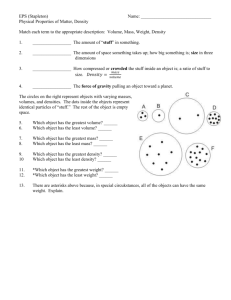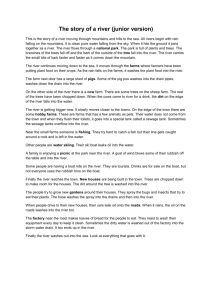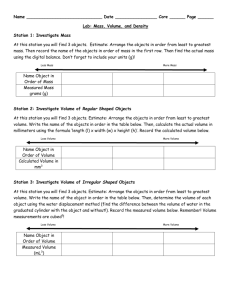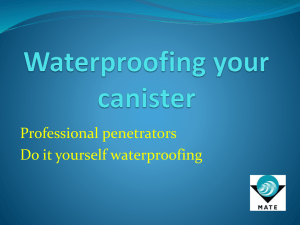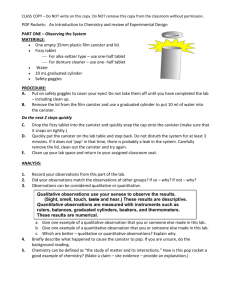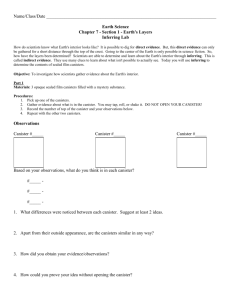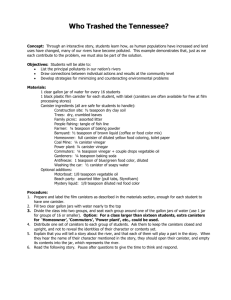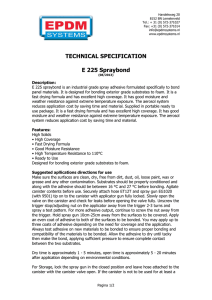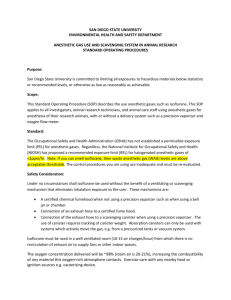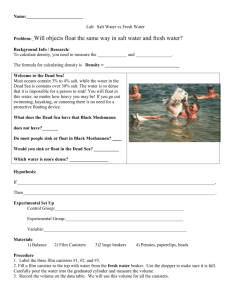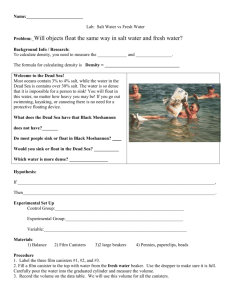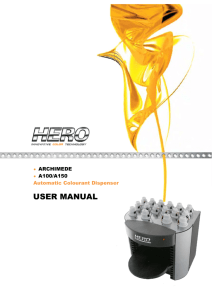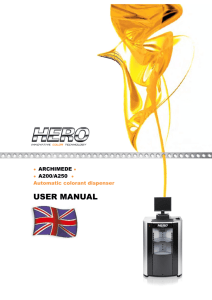OCHSNER CLINIC FOUNDATION Animal Care and Use Committee
advertisement
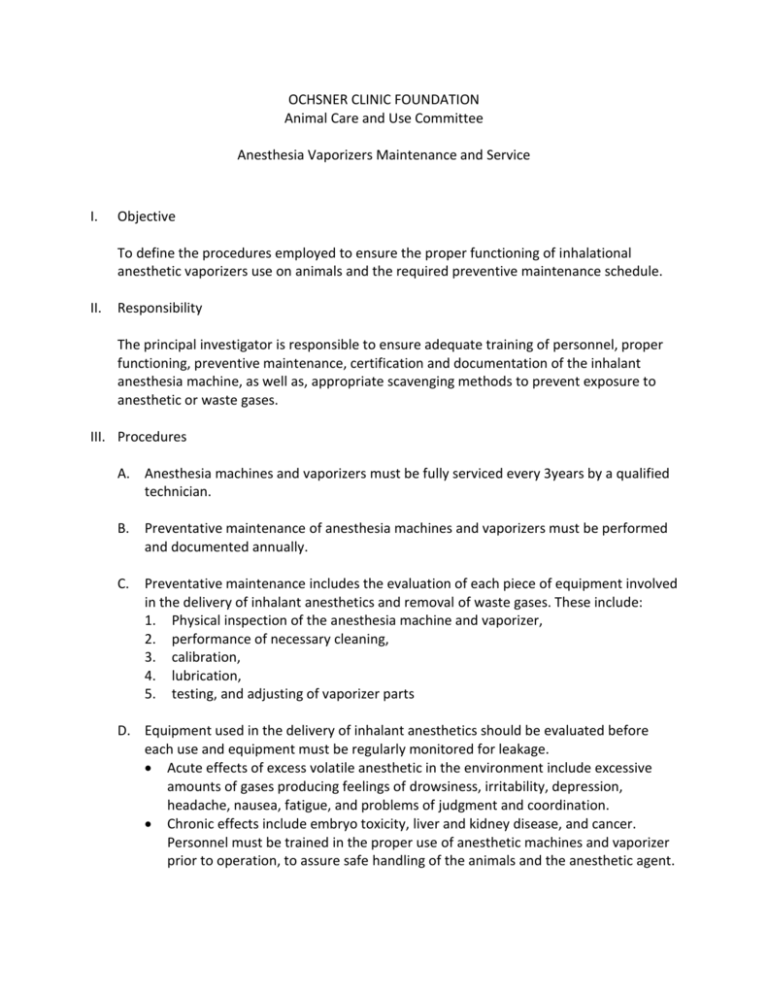
OCHSNER CLINIC FOUNDATION Animal Care and Use Committee Anesthesia Vaporizers Maintenance and Service I. Objective To define the procedures employed to ensure the proper functioning of inhalational anesthetic vaporizers use on animals and the required preventive maintenance schedule. II. Responsibility The principal investigator is responsible to ensure adequate training of personnel, proper functioning, preventive maintenance, certification and documentation of the inhalant anesthesia machine, as well as, appropriate scavenging methods to prevent exposure to anesthetic or waste gases. III. Procedures A. Anesthesia machines and vaporizers must be fully serviced every 3years by a qualified technician. B. Preventative maintenance of anesthesia machines and vaporizers must be performed and documented annually. C. Preventative maintenance includes the evaluation of each piece of equipment involved in the delivery of inhalant anesthetics and removal of waste gases. These include: 1. Physical inspection of the anesthesia machine and vaporizer, 2. performance of necessary cleaning, 3. calibration, 4. lubrication, 5. testing, and adjusting of vaporizer parts D. Equipment used in the delivery of inhalant anesthetics should be evaluated before each use and equipment must be regularly monitored for leakage. Acute effects of excess volatile anesthetic in the environment include excessive amounts of gases producing feelings of drowsiness, irritability, depression, headache, nausea, fatigue, and problems of judgment and coordination. Chronic effects include embryo toxicity, liver and kidney disease, and cancer. Personnel must be trained in the proper use of anesthetic machines and vaporizer prior to operation, to assure safe handling of the animals and the anesthetic agent. E. Charcoal Filter canister must be monitored for the absorbent of halogenated waste gases. Monitoring canister absorbent life can be done by following total hours of use or monitoring the weight of the canister. 1. To monitor by total hours, a log indicating the number of hours used must be maintained on the side of the canister. 2. The total hours of canister in use may not exceed 12 hours as the canister is no longer effective for absorbing waste gases. 3. To monitor by weight of canister, the baseline weight must be recorded directly on the canister. After each use or before next use, the canister must be weighed and value recorded on the canister. When there is a 50gm increase in the initial weight the canister must be discarded as the canister is no longer effective for absorbing waste gases. 4. The canister must be used vertically (do not lay them on their side while in use) and suspended off of the table top or floor if the exhaust ports are in the bottom of the canister. 5. Saturated canisters are considered hazardous chemical waste. IV. Anesthetic Vaporizer Preventative Maintenance Checklist is Required to be completed annually and must have the following: A. Date completed___________________________________________________ B. Person performing unit check______________________________________ C. Test results_______________________________________________________ D. Physical examination of the vaporizer for mechanical damage E. Examination of gas connections and cylinder yoke assemblies to ensure appropriate fittings F. Inspection of the tubing, fittings, and connections for cracks, breaks, loose connections, or jammed fittings. Use the soap bubble test to check for leaks. G. Inspection of O2 flush valve for appropriate function H. Check Fill/Drain system to ensure it operates properly and that there are no leaks. Any discoloration in the fill tank reservoir is indication the machine needs servicing I. Electrical safety inspection and battery replacement if necessary J. Verify operation of safety interlock if applicable K. Verify operation of hand wheel lock and release button L. Verify hand wheel turns smoothly through entire range
